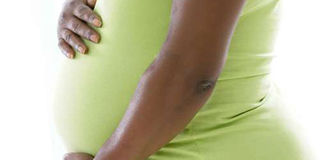Ministry recommends sex education to reduce abortions

The high number of unsafe abortion cases that are contributing to high maternal mortality can be attributed to unplanned pregnancies. FILE PHOTO
What you need to know:
- The guidelines, once adopted, will change how sexuality issues are taught in schools, handling of abortion, and pregnancy related complications.
- Conservative figures show that annually, at least 300,000 induced abortions are procured in the country, many of them unsafe.
- For women seeking to have their unborn babies adopted, trained health service providers will be required to link them to registered adoption societies.
Worried by the increasing number of unsafe abortions among teenagers, the Ministry of Health has developed new guidelines that require children of appropriate age to be taught pregnancy matters.
The guidelines, once adopted, will change how sexuality issues are taught in schools, handling of abortion, and pregnancy related complications.
“Education in pregnancy prevention should be part of the school curriculum and should be tailored to the age or level of the child,” the guidelines say.
Sexuality education in schools will be used as a strategy to reduce what the guidelines term as unplanned crisis pregnancies that lead to unsafe abortions and high maternal mortality and morbidity cases in the country.
“Sexuality education in schools should incorporate the role of teachers and parents/guardians,” it says.
Although the guidelines were completed last year, reproductive health and rights experts say the government is still undecided on making them public.
When similar guidelines were introduced three years ago, the Ministry of Health shelved them even before practitioners could implement them.
It was then understood that some religious organisations were responsible for turn of events.
But as pressure mounted on the government to reinstate the guidelines, it set up a new committee to relook at the matter and suggest fresh guidelines.
Titled Policies, Standards and Guidelines for Reducing Maternal Morbidity and Mortality in Kenya, the guidelines want adolescents and youth in and out of school to access and enjoy appropriate and quality reproductive health programmes and services.
Conservative figures show that annually, at least 300,000 induced abortions are procured in the country, many of them unsafe.
It is estimated that one out of five maternal deaths in Kenya can be attributed to unsafe abortion.
STAGGERING FIGURES
The 2014 Kenya Demographic and Health Survey shows that the country’s maternal deaths stand at 362 deaths per 100,000 live births, making it one of the most dangerous counties in the world to deliver a baby.
This high number of unsafe abortion cases that are contributing to high maternal mortality can be attributed to unplanned pregnancies.
To reduce the demand for abortion, the guidelines are recommending the use of adoption services as a solution to many who do not want to deliver and raise the baby they are carrying.
Proponents of adoption centres where young mothers can surrender their babies immediately after birth believe they will reduce demand for abortion services.
In the new arrangement, the government is required to facilitate the process through the development of simplified guidelines.
The recommendations further want the government to promote adoption, facilitate destigmatisation of adoption, and expand adoption facilities.
Families, faith-based organisations, support groups, and communities are also expected to promote adoption practices to help reduce maternal mortality and morbidity likely to result when women opt for unsafe abortion.
For women seeking to have their unborn babies adopted, trained health service providers will be required to link them to registered adoption societies.
If all these interventions fail, and the woman is unable to carry the baby to term, she can be allowed to terminate it safely; but under specified circumstances.
“Termination of pregnancy is a safe procedure when performed by a trained and skilled health service provider in an environment that meets minimal medical standards,” the guidelines say.




